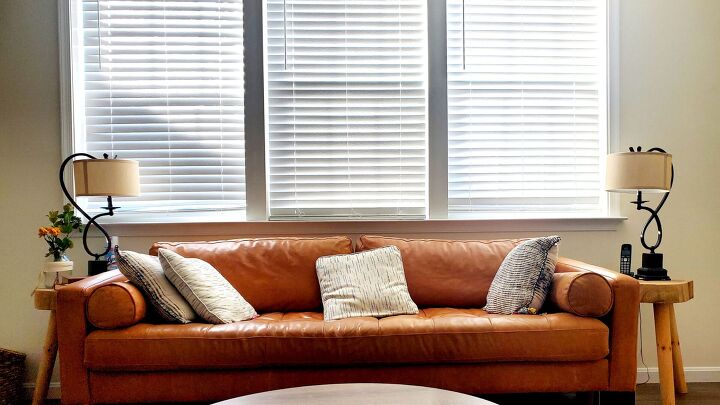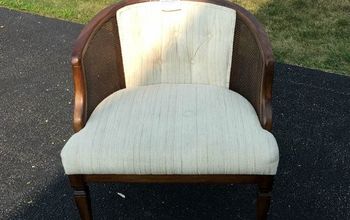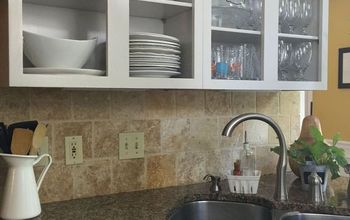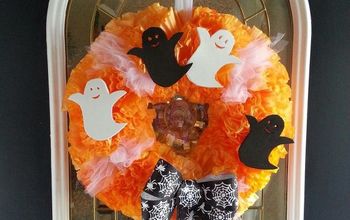How to Keep a House Warm Without Central Heat

When winter rears its chilly temps, it’s time to huddle up indoors and stay warm. However, not everyone has the option to turn a dial and ignite the central heat. Many homes in warmer climates aren’t equipped with a central heating system because it would only be used a few times a year.
However, we know that no matter what climate you live in, weather is unpredictable. If you live in a warmer climate without central heating and are faced with a cold front, you might be looking for ways to warm your house up.
This roundup of options for how to keep a house warm without central heat is just what you need to stay cozy all winter long or when temperatures unexpectedly drop throughout the year.
Take Advantage of Sunlight
One of the easiest ways you can add warmth to your home is by letting the winter sun warm it up. Open the window blinds, pull back the shades, and allow the sun to heat up your abode throughout the day.
If you’re using sunlight to warm up your home, it’s a good idea to follow the sun and take note of where it's at throughout the day to get optimal light (and warmth) streaming in.
Here are a few good rules of thumb about where windows are placed throughout your home and how much sunlight comes through them:
- South-facing windows will receive the steadiest amount of sunlight throughout the day.
- East-facing windows capture morning sunlight.
- West-facing windows will heat up the home all afternoon until the sun sets.
Insulate Windows and Doors
Unfortunately, taking advantage of sunlight coming through the windows means next to nothing if the windows aren’t properly insulated.
Insulation throughout your home—whether it’s in the walls, around windows and doors, or in attics, which we'll get to below—ensures that your home stays cool and warm, depending on the season.
In warmer months, insulation helps keep outside warm air from entering the home. When temps are chilly, well-insulated windows and doors will stop cold from penetrating your home’s interior.
Some of the ways you can insulate your windows include the following:
- Install cellular shades. These accordion-like shades are typically made from fabric, which forms air pockets that trap cold air coming in through the window the shades are on.
- Apply a rubber weather stripping. Very thin openings in windows and doors are more common than you think, and cold air slipping through the cracks can quickly cool down a room. Stripping, which is applied around the edges of doors and windows, seals out any cold air that might be trying to enter your home.
- Cover them with vinyl sheets. Vinyl is a great insulator, which is why so many homes have vinyl siding exteriors. Vinyl is a flexible material that collects cold air, shrinks in the winter (and expands with warm air in the summer), and comes in rolls. This is an especially good solution for storm doors and windows.
Light Up the Fire
If you are lucky enough to have a working fireplace in your home, use it to your advantage to combat a chilly home! Whether it’s a gas fireplace or a wood-burning fireplace, it’s a quick fix that offers great ambiance and warmth.
While a burning fireplace won’t heat your entire home (most of the warmth exits through the chimney), you’ll be able to warm the immediate surrounding area.
Wood stoves are also a great option here. If your home has a wood stove, most typically seen in older houses, fire it up and it should heat up the room it’s in and help circulate warm air throughout the home.
You can also purchase an electric fireplace for your home. There are many options that double as decor. It’s an affordable alternative to installing a real fireplace with a chimney or a wood stove.
Close Doors
Close doors to any unused rooms to create an even further barrier between you and the outdoors.
Air is likely coming in through a room’s windows, and by shutting off the path, you’re helping prevent the cold air from making its way to other areas and rooms you’re using to stay warm.
Add Insulation in the Attic and Crawl Spaces
Since warm air rises, a lot of heat escapes a home through its attic and crawl spaces. Be sure that these areas of your home are properly insulated to keep the heat inside.
We recommend calling in a professional to insulate your home’s attic or crawlspace, as they’ll be able to scope out the area and determine the best type of insulation material to keep heat in and how much will be needed.
Use a Space Heater
One of the easiest, most effective, and immediate ways to warm a room without central heat is with a space heater. Look for a high-quality, energy-efficient option.
An electric wall-mounted heater is another great option if you don’t have central heat. It provides the same benefits as a portable heater without taking up floor space.
Try Heat Panels
Heat panels provide warmth to a room via infrared heating. Typically, heat panels are secured to a wall or ceiling of the room, and they’re great for allergy sufferers since no potentially dusty air is being blown out of the machine (as with space heaters).
Use a Radiator
If you live in a four-season climate but don’t have central heat, a radiator may likely already be installed in your home. Check its efficiency by removing any furniture that’s blocking the radiator from pushing heat throughout the room.
If your radiator doesn't seem to be working to its full potential, it might need cleaning—over time, a radiator can get filled with condensation and dirt and result in sludge, which can block air from coming out. If you find that there are any cold spots on the radiator (be very careful when checking so you don't burn yourself), call in a radiator service professional to clean it.
Aluminum Foil Radiator Hack
Reverse Ceiling Fans
Did you know that you can switch the direction of your ceiling fan? When it turns counterclockwise, it creates a downdraft, pushing cold air throughout the room. When it spins clockwise, it draws up warm air to disperse it across the room.
Reverse your ceiling fan so that it moves in the clockwise direction when daylight savings starts in November. By the time the chilly weather hits, the direction of the fan will draw up warm air and push it back down so the room maintains an evenly warm environment. Remember to reverse it back in March!
Utilize Body Heat
Have you ever been in a packed conference room or standing at a crowded concert and started to sweat? That’s because bodies emit heat, and when you combine a litter of 98-degree bodies in one space, it’s bound to get warmer.
While one singular body won’t make much of a difference, take it as an excuse to have some friends over to warm your house up.
Another surefire way to promote warmth in the body and throughout the home is to do heat-inducing activities. For starters, switch on your favorite YouTube workout and exercise your body at home. It may not seem like much, but warming up your body can make a difference.
Also, get cooking! Moving around will keep you warm, while the heat emitted from the oven and stove will help warm the home. Play music and dance in the kitchen, and you’re killing two birds with one stone.
Do you have additional advice on how to keep a house warm without central heat? Share below!
Enjoyed the project?
Comments
Join the conversation
-
 Sandy Rolon
on Feb 27, 2022
Sandy Rolon
on Feb 27, 2022
Thanks. Awesome info, I have a 122 yr old home (radiators). I've been looking for ways to heat my NYC basement after Ida Storm during the winter months, An electric wall-mounted heater is a great option when you don’t have central heat and it doesn't take up floor/ceiling space.
-
-
 Em
on Feb 28, 2022
Em
on Feb 28, 2022
Open fireplaces are not a very efficient source of heat for a home and can be as low as 10% efficient. Much of the heat generated by an open fire can be lost up the chimney instead of being used to heat a room. The draft can also pull heat out of the room and potentially make a house colder.
Closing doors obstructs airflow and makes your furnace work harder.
Adding people in a room makes NO sense when you live alone.
Who doesn't have heat in a home that they need to put in a radiator?
So some idea make sense, others do not.
-
-
 H
on Mar 05, 2024
H
on Mar 05, 2024
My house was built in 1900 and is very drafty and cold in the wintertime. Where there isn't a door, I use clear shower curtain liners with zip ties on tension rods to close off the parts of the house we don't go in (Guest bedroom, formal Dining room, etc.). We've just added a Ventless Gas Fireplace to our Living room and are cozy and warm all of the time.
-

































Frequently asked questions
Have a question about this project?
When I saw the pic of the fan, I imagined the bulbs themselves were heat producing. Would this be an economical alternative as well? Or would the cost outweigh the benefit?
vinyl sheets, film or like plex glass?